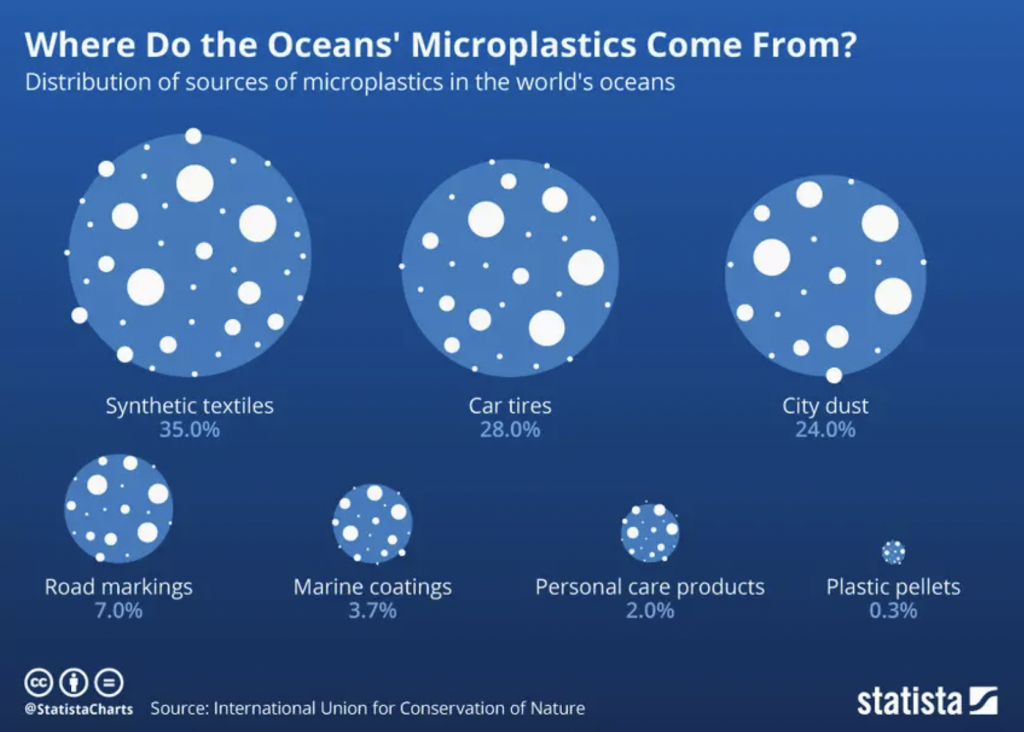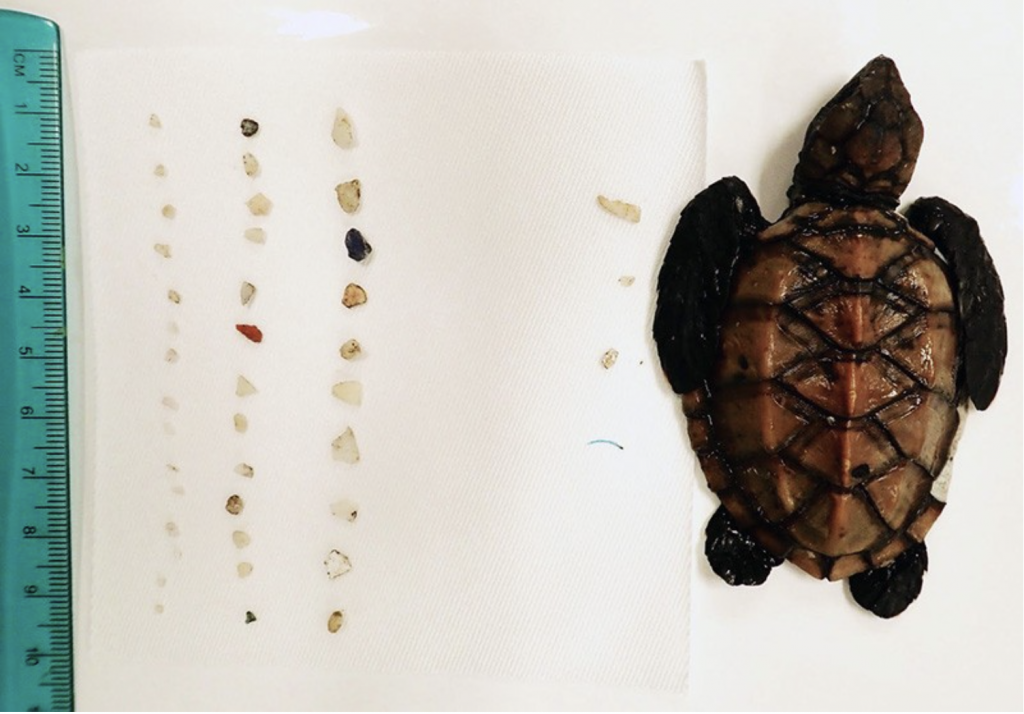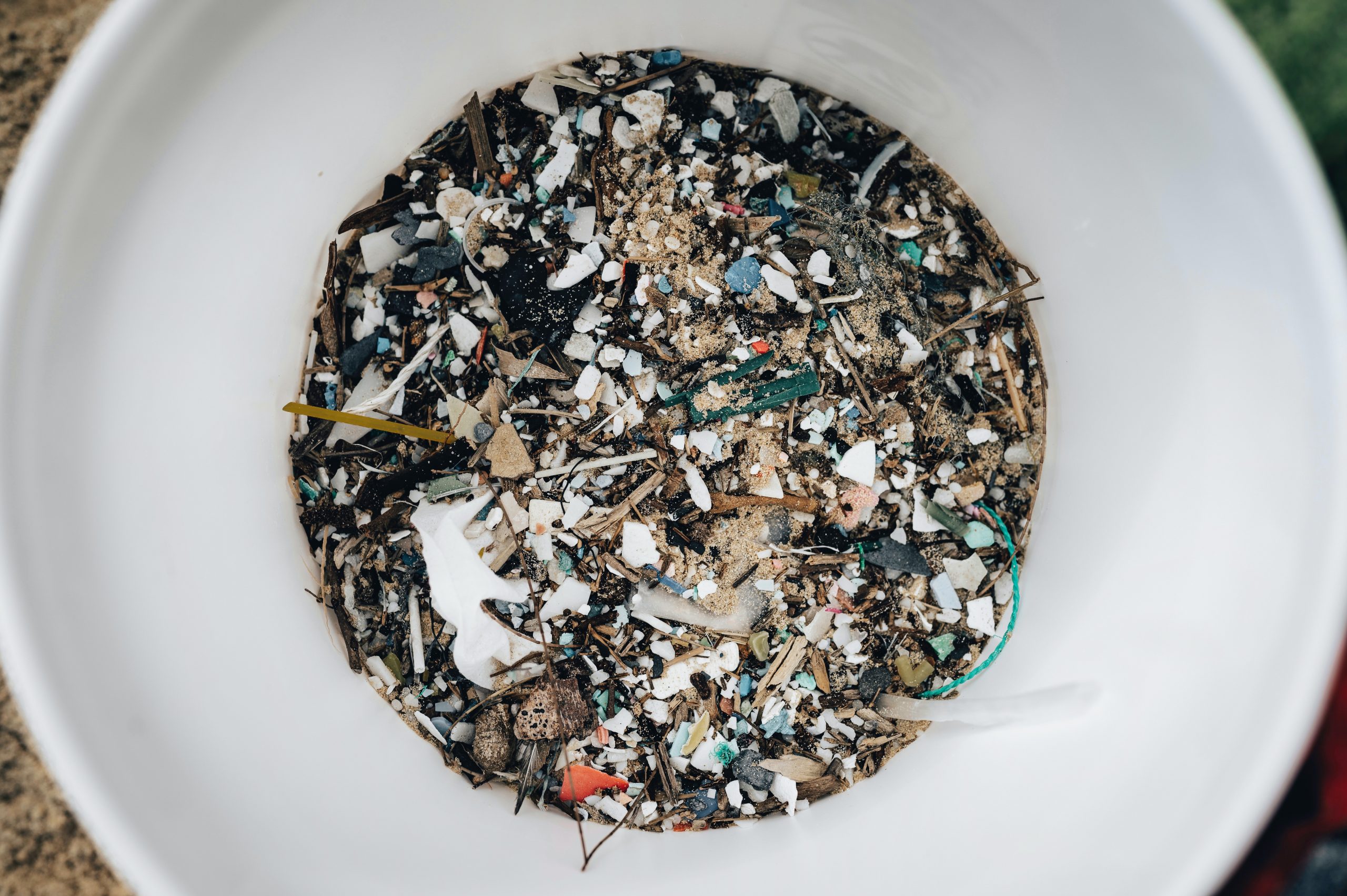We al know that plastics are a major issue for our health and our environment.
We have been hearing and reading about how it pollutes our ecosystems and disrupts animal health, and can remain active marine contaminants for up to 450 years.
But not many of us may know about microplastics, a growing global concern whose effects are still being studied.
As it name suggests, microplastics are small plastic pieces (less than five millimeters long).
These tiny particles don’t biodegrade and are almost impossible to remove them from the environment where they accumulate.
Some of it comes from plastic debris that degrades into smaller and smaller pieces. Usually, from car tires and city dust, though the majority is a result of plastic fibers from synthetic clothing.
A large percentage exists in the form of microbeads, a type of microplastic that is added to certain products as exfoliants (present in some cleansers and toothpastes, for example).
Also, microplastics known as cellulose acetate fibres comprise the majority of cigarette filters.
It is a widespread phenomenon. Researchers have found microplastics pretty much everywhere they have looked for them: on mountains, in the ocean, in the Arctic sea ice, and in our air, drinking water and bodies.

Mircoplastics: Why are they a problem?
But why are microplastics a problem? Let’s see some of its negative effects:
- All kinds of organisms can ingest microplastics. If this happens, they can block their gastrointestinal tract. Or they trick them into thinking they don’t need to eat, leading to starvation. And that leads to a loss of biodiversity and a disruption of food chains.
- Many toxic chemicals can adhere to the surface of plastic and, if ingested, contaminated microplastics could expose organisms to high concentrations of toxins.
- Manufacturers usually add hazardous compounds to plastics, such as plasticizers, stabilizers and pigments. So, when microplastics then enter cells or tissues (animal or human), they can cause a lot of harm.
- Microplastics can interfere with endocrine (hormonal) systems.
- Zooplankton grow more slowly and reproduce less successfully in the presence of microplastics. This is a big problem because zooplankton are an essential element of the aquatic food chain. They act as intermediaries between algae and the larger invertebrate predators and fish who in turn feed on them.
- Microplastics can affect the digestive and reproductive systems. A 2020 study found that mice fed large quantities of microplastics showed inflammation in their small intestines. And mice exposed to microplastics had a lowered sperm count and fewer, smaller pups, compared with control groups.
- UNEP’s 2021 report From Pollution to Solution warns that chemicals in microplastics “are associated with serious health impacts, especially for women”. These can include changes to human genetics, brain development and respiration rates, among other health issues.

Credit: Jennifer Lynch for Nature
Microplastics: Look out for plastic-made home products
Plastic packaging:
The largest global market sector for household plastic materials is for packaging designed for immediate disposal.
Bottled water:
In 2018, brands of bottled water, purchased in 19 locations and in 9 different countries, were tested for microplastic contamination. The result? Of the 259 total bottles processed, 93% showed some sign of microplastic contamination!
Clothing and textiles:
Another important source of marine microplastics is microfibres leaching from clothing when washed. Microfibres are 1/100th the diameter of a human hair and are used for better waterproofing, breathability and flexibility in sportswear. According to a 2020 UNEP report, around 9 per cent of annual microplastic losses to the ocean come from clothes and other textiles.
Cosmetics:
The cosmetic industry is another major culprit: A lot of cosmetic products contain microbeads. These are often used as emulsifying agents or just as cheap fillers. From sunscreen and shampoos to make-up and deodorants: microplastics are used in all kinds of products we can find at home. Plastic particles from these can be absorbed into the skin. Or, in the case of products like lipstick or lip balm, we directly ingest them. If they remain on the skin they are eventually washed down the drain and could make their way to the oceans.
Microplastics: How to counteract their negative effects?
Plastic is not the root of the problem, but rather the single-use lifestyle we’ve become accustomed to.
We need to stop using plastic that is not necessary, and to have a much simpler recycling system.
“There’s no point producing things that last for 500 years and then using them for 20 minutes. It’s a completely unsustainable way of being.”, says Winnie Lau at the Pew Charitable Trusts in Washington DC.
So what can we do? Trying to embrace a plastic-free lifestyle is the answer.
Here at Bluehouse we offer you a wide range of plastic-free products for different uses.
Check out some options:

